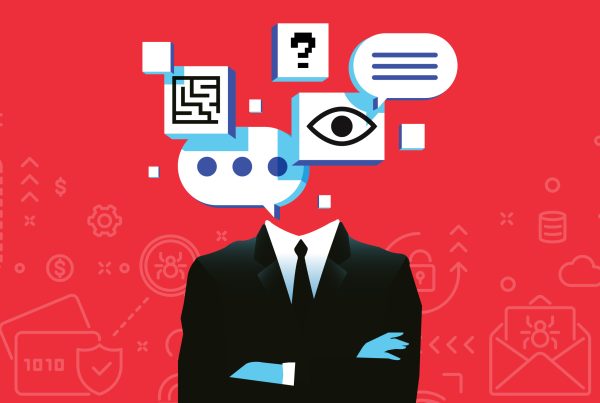By Imran Bashir, Ph.D.
Vice President, Emerging Technologies
Have you asked cloud for a 10-year challenge?
The thought of a 10-year challenge is mind blowing considering the leaps and bounds cloud computing has made over the last decade. The acceleration of depth and breadth of cloud service offerings between 2008 and 2018 is just plain astonishing. Case in point is AWS. In 2008, services and features offered by AWS were an unconvincing 24. In comparison, AWS had over 5000 features and services in March of 2018, with hundreds more added during rest of 2018. At AWS re:Invent 2018 alone, AWS offered close to 100 additional services and features to their cloud computing platform. These services range from additional instance (virtual machine) types, storage/backup services, support of additional databases, Internet of Things (IoT), and a broad set of AI/ML services, just to name a few.
On a similar pattern, Microsoft has incrementally accelerated it cloud services offerings as it hit its 9th birthday (Microsoft initial release was in February 2010). Today the Azure platform has matured to a rich set of over 600 cloud services with thousands of service features. Likewise, Google had launched its App Engine preview just for 20,000 developers in April 2008. In comparison, Google cloud platform joined AWS and Azure to the Leader quadrant of Gartner’s Magic Quadrant for Cloud Infrastructure as a Service, Worldwide in 2018. Today Google lists over 90 products under the Google cloud brand with thousands of features. Today, AWS, Microsoft, Google, and IBM are the top four competitors in the cloud infrastructure services market touching almost every small and large business directly or indirectly.
Well, that was last decade but where do we anticipate cloud computing in headed next. It would be foolish to predict the future of cloud computing in another 10, 5, or even 3 years. I would however take a leap of faith in identifying the trends that we reckon will dominate cloud computing in the current calendar year 2019. These are based on what we at ECS see in delivering solutions for our current customers, anticipated customers’ needs, market trends, and cloud service providers’ service offerings.
In no particular order, here are the top 9 cloud trends for 2019.
- Cloud gets enterprise attention: We can safely say that while in the past only workloads, applications, and even perhaps business units were adopting cloud at the individual level, 2019 will be the year when cloud goes enterprise. Organizations have started working on cloud adoption not just to improve individual workloads, but to leverage cloud to support their business missions. This means that enterprises are looking at cloud adoption, cloud migration, and cloud governance from an organizational viewpoint. This is due to multiple success factors including cost, faster time to market, and improved innovation cycles. Additionally, availability and maturity of cloud management tools is providing the level of comfort that an enterprise needs to fully commit to cloud computing. With this enterprise shift, cloud governance for enterprise becomes a critical customer requirement; managing 10 cloud accounts/subscriptions is much different from 1000’s of accounts/subscriptions across multiple time zones. CSPs and managers will have to take governance very seriously.
- Cloud Services focus shifts: While the last few years have seen a concerted usage of infrastructure services like compute and storage, CSPs have been building additional services on top of their infrastructure services. These platform services include managed databases, cloud management services, media services and so on. As cloud consumption market matures including end customers as well as cloud technology partners, the shift is going to see a larger adoption of these platform services. This is a major mind shift as organizations will move away from thinking data centers to a true services consumption perspective. Instead of recreating their data centers in the cloud, organizations will start leveraging cloud services to support their missions.
- CSP Competition Intensifies: While not quite an earth-shattering revelation, the level of CSP competition will go beyond a price war. The year of 2019 will shift CSP focus from claiming new territories and offering pioneering services for these new territories including artificial intelligence, machine learning, media services, and serverless computing. CSP will also start working on providing depth of their existing cloud services by adding more features and capabilities.
- Hybrid Multi-Cloud stays on the horizon: The “vendor lock-in” will continue to haunt consumers and they will start exploring the idea of hybrid multi-cloud strategies. Previously, organizations were extending their on-premises environment into cloud but now the risk managers are poking them to toy with hybrid multi-cloud environments to reduce their risks with single CSP. An organization’s decision to go with such multi-cloud strategy will depend on realization of cost, investment, skills, training, radical changes in processes/policies, and many other factors. 451 Research survey shows that 69% of enterprises had planned to have multi-cloud/hybrid IT environments by 2019.
- Cloud “Cost” optimization gets redefined: Cloud cost has been a primary driver of cloud adoption, migration, and operation. Cloud economics, ROIs, and continued cost optimization has been a beaten to death horse. With the shift in enterprise focus on cloud, the term “cloud cost” is going to redefined and subsequently ROIs are going to be reanalyzed. Over the last 10 years, cost comparison has primarily been done initially on VMs and storage, then including facilities cost, and finally the operations cost. In this year, the cost will start including secondary elements of cost including cost, and/or reduction thereof, of training, migration, change in policies/procedures, workforce and others. This cost, or reduction of cost, will help drive organizations to propel cloud adoption to support organization missions.
- ML on Cloud starts transforming IT: AI and ML have been the topics of pilots, proof of concepts, and interesting ideas for organizations. This year AI/ML is going to go main stream where it will start transforming how organization conduct their business. Use of AI for security enhancements, automation of IT operations, real-time facial recognition from static images and videos, OCR from twisted images, machine vision for threat anticipation, language translations, and bots development will all increase at a rapid pace to transform IT operations for internal use, and development of products for end customers.
- Serverless computing adoption accelerates: As cloud goes enterprise with a focal point shift from infrastructure to services, serverless computing is going to be adopted at a much higher rate. In a TriggerMesh blog, The New Stack Serverless Survey 2018 predicts the use of serverless architecture is planned by more than 75% respondents. This is supported by Gartner April 2018 Report An I&O Leader’s Guide to Serverless Computing which predicts that more than 20% of global enterprise will have deployed serverless computing technologies by 2020.
- Containers will not be contained: Organizations’ digital transformation with cloud has brought us to microservices, containers, Kubernetes, and container management services. With native cloud development, and re-architecture in the cloud, organizations will start transforming applications to microservices-based architectures and hence the use of container management services like AWS EKS and Microsoft AKS. Kubernetes will continue to see a rise in adoption and CSPs will continue to provide additional services and features to streamline the management and deployment of container applications.
- Native Cloud Development get serious: Over the past 10 years, organizational cloud maturity has moved from curiosity to pilots to storage backups to forklift applications into cloud. Organizations have reached a momentum, as well as trust in the cloud, to start native cloud development by leveraging true cloud services like autoscaling, automation, microservices, and serverless computing. This year will see the growth of native cloud development to reap cloud’s true benefits.
No matter how you order these trends, and what may be applicable to you, one thing is crystal clear. Cloud is here, and it will continue to be a core of enterprise missions and IT operations for decades to come. The ecosystem of CSPs and cloud technology partners will continue to mature to enhance cloud services, cloud management tools, and integration services to ensure that enterprises’ reliance on cloud exceeds their expectations.






